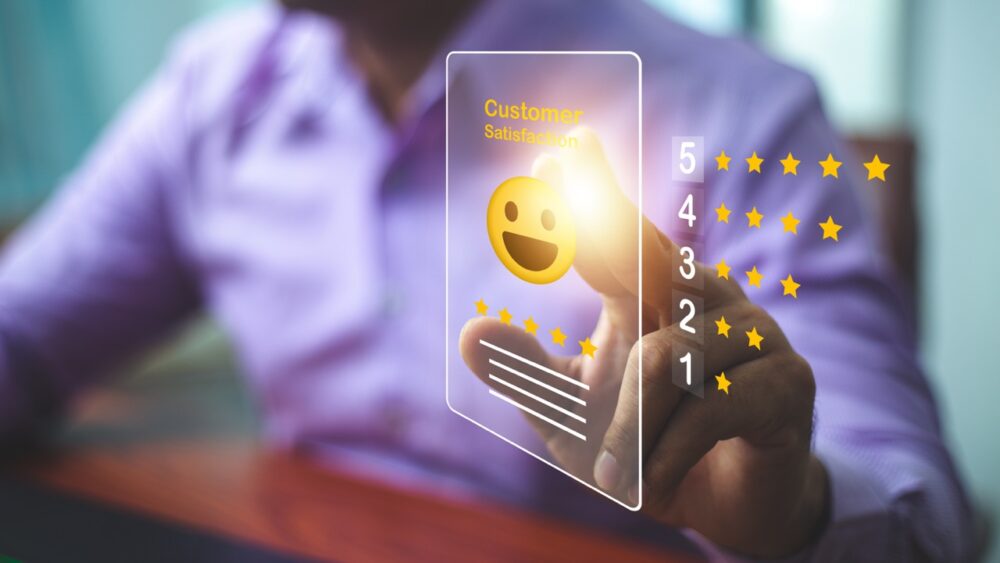Meeting and exceeding customer expectations is the main objective for all professionals in the hospitality industry, but the process is rather intricate as there are many pieces to the puzzle and the rules of the game keep changing.
It’s a well-known fact that customer needs and expectations are evolving at lightning speed these days. The core principles of great customer service may have remained fairly consistent over the years, with things like speed, accessibility, accuracy, transparency, and reliability holding the key to consumers’ hearts at all times and across all industries.

However, customer expectations have not stayed the same and are now changing faster than ever before. This revolution can be attributed to a variety of factors, including easy access to information, the increasing number of choices, and the emergence of new technologies and innovations which continue to raise the bar higher and higher.
Businesses are now dealing with a new breed of customers – savvy, technology-dependent, self-sufficient, socially conscious, and highly demanding – and many are falling short when it comes to meeting their ever-changing expectations. This constant race against time and each other in which companies are trying to impress customers and gain more business often feels like a Sisyphean endeavour.
Nowhere is this phenomenon more obvious than in the hospitality industry, where reaching business success depends on providers’ ability to maintain high levels of customer satisfaction.
Managing different customer expectations is an essential skill in today’s market
The hospitality industry is known for its cutthroat competition and having a very low margin for mistakes. Besides, clients are no longer content with run-of-the-mill services and typical amenities and expect hospitality organisations to go the extra mile at every touch point, which means standing out from the crowd and staying relevant has become a constant struggle.
According to industry statistics, about 30% of restaurants fail during the first year of operation. In the hotel market, data reveals that 48% of guests leave reviews after having a negative experience, while 81% of travellers read reviews before booking their accommodation. Moreover, following the Covid pandemic, tourists have become more conscious of their travel habits and increasingly favour sustainable travel practices and companies that take clear and quantifiable actions in this respect.
But why should you care about these figures and trends? As a service provider, knowing how to please customers is the one aspect that can make the difference between success and failure. It’s certainly not easy to get into the mind of the consumer, understand their motivations, and figure out what they think, feel, and want from you. But without this information, it’s impossible to run a thriving business in hospitality or any other industry for that matter.
Once you have cracked the code and deciphered customers’ desires, everything becomes easier. Managing customer expectations proactively allows you to:
- Differentiate yourself from your competitors
- Predict market trends
- Improve your offering
- Create a positive brand image
- Build brand loyalty
- Increase customer retention rates
- Boost business growth through word-of-mouth-marketing
- Establish yourself as a leader in your field
- Increase your bottom line
Therefore, every effort and resource invested in keeping clients happy and engaged is going to reward you with numerous advantages in the long run.
Close the gap between customer expectations and the actual customer experience
When engaging with a business, people already have a rough idea of how they want the interaction to go. However, despite hospitality providers’ best efforts, there’s often a disconnect between the services customers expect to receive and what they actually get.
This usually happens because companies have a hard time keeping up pace with the rapidly changing client expectations and are unable to deliver the kind of experiences they hope to receive. With consumer behaviour shifting at a faster rate, the customer expectation gap is getting wider and wider.
Other factors that contribute to this discrepancy are the lack of clear communication, setting unrealistic standards, making exaggerated claims and promises, insufficient understanding of customers’ needs, and an inconsistent level of service.
As expected, the consequences can be quite damaging for your company, ranging from higher customer turnover and poor brand reputation to loss of revenue. It’s therefore crucial to work towards bridging this gap and matching expectations with reality so that customers have a reason to choose you over your competitors.
Some effective ways to meet customer expectations in the hospitality industry
Although there’s no clear-cut recipe for meeting customer expectations that can be applied by all businesses operating within the broad realm of hospitality, there are various strategies and measures you can use to make sure you get as close as possible to achieving your objective.
Know who your customers are and what they want
Meeting customer expectations starts with knowing who your customers are and what they want from you. This might sound like the most obvious piece of advice ever, but getting to know your audience is not always as straightforward as it seems. It’s easy to assume that when it comes to hospitality services, all people look for the same things, namely quality services, cleanliness, comfort, and great prices.
While this might be true, it’s important to take note of the variations. For example, if your business caters to certain demographics like young families or people approaching retirement age, you have to be aware of the characteristics of these particular groups and understand their specific preferences and requirements so you can give them what they expect.
That’s why relying on assumptions and guesses to make business decisions is not the way to go if you want to win over customers. You need hard data and reliable information to hit the mark. Things would be so much easier if you had a crystal ball that could help you read the minds of your customers, but as it is you have to use other methods to get acquainted with your audience and their expectations such as surveys, CRM systems, loyalty programs, social media interactions, reviews and so on. The data you collect via these channels will help you create an accurate customer profile, which is a first step in the right direction.
Be upfront and set realistic expectations
Much too often companies make the mistake of setting the bar too high and promising more than what they can deliver, either out of sheer enthusiasm or driven by the desire to outshine the competition. This unfortunate approach will inevitably lead to disappointment, frustration, and complaints from unsatisfied customers.
Similarly, bending the truth to make your company look better or leaving room for interpretation can be seen as a deceitful strategy that your clients won’t appreciate. You need to be transparent and clear when you communicate your intentions and promote your services so that your audience knows exactly what to expect from you.
While it’s important to embrace a growth mindset and look toward the future, you have to set realistic expectations and establish objectives that are within your reach. Keep in mind that nothing gets past clever consumers and they will hold you accountable for your all claims, so you have to be careful about the information you put out there. It’s better to under-promise and over-deliver than the other way around.
Develop personalized marketing strategies
As we’ve already mentioned, meeting customer expectations is not a one-size-fits-all approach. Your clients don’t want to be treated as a collective entity but as individuals who have their own likes, dislikes, and predilections. That’s why generic experiences that gloss over their personal preferences fail to impress.
Personalisation, on the other hand, drives the best results. Studies show that 76% of consumers are more likely to purchase from companies that offer personalised products/services. In the aviation sector, Iberia Airlines provides a great example of personalised marketing with its Christmas campaign where respondents where customers were asked questions about their ideal holiday, and then sent emails with their replies to the persons they cited as a travel companion.
Assuming you’ve already done your due diligence and gained an in-depth understanding of your customers’ wants and needs, you can use that information to craft personalized marketing strategies. This will help you create a deeper connection with your clients and provide them with an optimised experience.
People feel seen and appreciated when brands don’t treat them as mere numbers on a spreadsheet, so by tailoring your message to meet clients’ unique needs and speak to their specific interests, you’ll certainly gain their attention and increase your chances of turning them into loyal customers.
Listen to your customers and respond to their feedback
The best way to find out what customers want is to hear it straight from the horse’s mouth and creating two-way communication is crucial in this respect. You need to make sure that your customers can hear your message loud and clear, but it’s equally important to give them the possibility to respond and allow them to share their two cents regarding your services and the experiences they’ve had with your company.
Just as you use multiple channels to promote your service, you should also provide various methods that your clients can use to get in touch with you and share their opinions and thoughts. You can collect feedback via phone, email, website reviews, and social media pages and gain valuable customer insight.
However, it’s not enough to give clients the chance to express themselves. If their words fall on deaf ears and there’s no one at the other end listening, no one will benefit from it. You also have to learn how to actively listen to what your customers tell you and act on their feedback. This will show them you care and help you address their issues promptly and efficiently.
Keep your customers’ information secure
Data collection plays a crucial role in ensuring smooth operations in the hospitality industry. Businesses in the field gather different types of data from their clients such as:
- contact information
- guest demographics and preferences
- interests and activities
- booking data
- length of stay, etc.
This helps companies make informed business decisions and improve the quality of their services. By leveraging data, hospitality providers can offer personalised services to their customers, adjust pricing based on factors such as demand or competitor pricing, develop targeted marketing campaigns, forecast future demand, mitigate potential risks and crises, and so on.
However, the vast amount of data flowing into this sector also makes hospitality organisations a prime target for cybercriminals, raising concerns over data safety and privacy. As a hospitality business, it’s your responsibility to ensure the safety of the sensitive information you collect from your customers and do your best to keep cyberattacks at bay, so you don’t have to deal with compensation claims following a data breach and all the other damaging consequence associated with these increasingly prevalent incidents.
This implies investing in a strong cybersecurity system for your company and implementing robust measures like conducting regular cybersecurity audits, installing security updates, enforcing security policies, and so on. Prioritising data safety will provide clients with peace of mind and make them perceive your business as trustworthy and reliable.
Anticipate customer needs and pain points
Knowing what your customers want and responding accordingly is a great way to get in their good graces and gain a competitive advantage in the market, but you know what’s even better? Anticipating their needs and desires. If you want to really stand out, you have to give your customers more than they expect.
Some people are undecided, confused, or don’t know how to communicate their expectations clearly and explicitly. So, it’s your job to reach out and give your customers what they need before they ask for it or even know that they need it as if you were able to predict the future or read their minds.
The same thing applies to customer pain points. You need to be aware of the issues that could affect your customers’ experience and address them before they ask for help or prevent them from happening in the first place.
Don’t worry, there’s no sorcery involved in the process, just some tried and tested methods that will help you stay one step ahead in your industry and take the customer experience to a whole new level. Leveraging customer data to identify trends, patterns, and preferences and gaining insights by monitoring client interactions with your company can prove extremely helpful in this respect.
Is there anything else you need to consider?
Meeting customer expectations in hospitality includes many moving parts, so it’s virtually impossible to list them all here. But here are a few final pieces of advice to complete the picture and get you one step closer to reaching your objectives.
- Achieving success in hospitality is all about creating exceptional experiences and providing outstanding service to customers. In a world that’s becoming ever more volatile, keeping abreast of changes and reacting promptly to shifting consumer behaviour is not an easy task. That’s why managing customer expectations shouldn’t be seen as a one-time thing but an ongoing process that requires constant effort and perseverance.
- As new expectations keep updating and rewriting the playbook of customer experience, the learning never ends, so moving towards a proactive approach and striving to constantly improve services is something all hospitality businesses should do.
- Being average won’t cut it and neither is copying what others are doing. You need to deliver on your promise, exceed expectations when possible, and look for new solutions to address longstanding issues. Technology can be a great ally in this regard. For example, providing in-room tablets in hotels or developing mobile apps that guests can use to interact with your service can enhance their experiences and increase satisfaction.
- Finally, you need to build a great team, invest in constant training, and implement a solid quality management system so you can maintain a consistent level of quality in your business.
Learning from the best
Learning the theory is one thing and putting it into practice is another, so how about looking at some real-world examples of hospitality companies that have mastered the art of managing customer expectations?
Ritz-Carlton case study
The Ritz-Carlton, a world leader in luxury lodging, provides a lesson in anticipating customer needs and providing unparalleled levels of service. Apart from the Gold Standards that the hotel company upholds – which can be found on their website – the Ritz-Carlton employs a highly efficient CRM system that provides them with valuable insights into customers’ preferences and behaviour and allows them to tailor their services accordingly.
But it’s the recruitment process and approach to training where the Ritz-Carlton truly excels. Candidates go through a rigorous selection process with a strong focus on finding people with a natural talent for working in hospitality. Then every employee has to undergo at least 250 hours of training per year.
Staff members are encouraged to take the initiative and dig deeper to identify customer needs, think outside the box, and come up with unique solutions in unique situations that they can share with other employees on the company’s database. This allows them to address customer issues quickly and efficiently and contribute to the company’s development.
The Ritz-Carlton’s approach to customer service has proved so effective that it prompted Apple to take a page from their book and send its future store managers to the Ritz-Carlton leadership training program. That’s where the famous Genius Bar idea came from.
Airbnb case study
Another noteworthy example is provided by Airbnb’s remarkable journey into the hospitality realm. With a 20% share in the vacation rental market, the online platform has all but revolutionised travel by creating a space that fosters authentic connections between guests and hosts and encourages personalised service.
Airbnb broke the mould and introduced a new way of travelling to the world where ease of access, direct interactions, unique accommodations, personalised recommendations, and immersive travel experiences reign supreme. Their resounding success now translates into a market capital of 73.34bn USD.
Conclusion
Nowadays, customers expect a lot from companies in the hospitality industry, be it hotels, restaurants, bars, resorts, tour operators, or any other type of hospitality-focused service provider. The fact that their preferences and behaviours shift constantly and rapidly adds another layer of intricacy to the problem.
This means you need to go the extra mile to keep up and adapt to the fast-moving customer expectations if you want to navigate these common challenges effectively and make your business rise above the rest. So, it’s time to walk the walk and put all these tips and recommendations into practice as you pave the path to success.
















